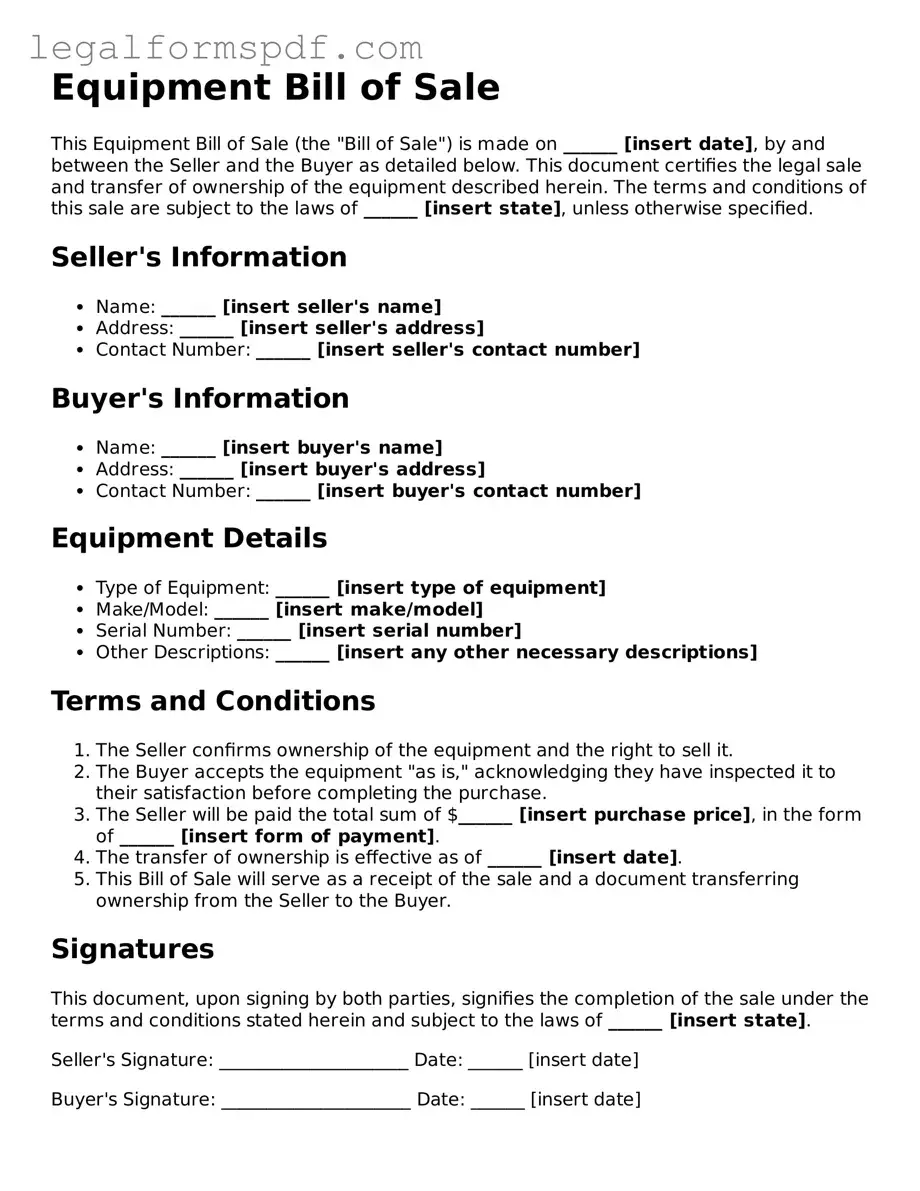The Equipment Bill of Sale form is quite similar to a Vehicle Bill of Sale, as both serve as legal documents that record the sale and transfer of ownership of an item. In the case of a Vehicle Bill of Sale, it specifically deals with cars, motorcycles, and similar types of vehicles. It includes details such as the make, model, year, VIN, and the sale price, similar to how an Equipment Bill of Sale would list the equipment's specifics and sale information.
Similarly, a Boat Bill of Sale functions like the Equipment Bill of Sale but is tailored for transactions involving boats and watercraft. This document captures the make, length, year, hull ID, and other specific details of the boat, along with the sale price and terms, mimicking the structure where the Equipment Bill of Sale outlines the particulars of the machinery or equipment sold.
A General Bill of Sale also shares common ground with an Equipment Bill of Sale, with its broad applicability to various items being its standout feature. Unlike equipment-specific documentation, a General Bill of Sale can apply to any personal property sale, from furniture to electronics, including details like a description of the items sold and the agreed-upon price, acting as a catch-all sales document.
Another document that parallels the Equipment Bill of Sale is the Firearm Bill of Sale. This specialized form records the sale of a firearm, detailing the make, model, serial number, caliber, and the parties involved in the transaction, ensuring a legal transfer of ownership, akin to how equipment transactions are documented.
The Business Bill of Sale is akin to the Equipment Bill of Sale but focuses on transactions involving the sale of an entire business or a portion thereof. This document outlines the business assets being sold, which may include equipment, inventory, and intellectual property, serving a similar purpose in documenting the sale and transfer of business assets.
Furthermore, the Livestock Bill of Sale is related to the Equipment Bill of Sale in that it is used for transactions involving animals used in farming, such as cattle or horses. It records the details of the livestock sold, including breed, age, and health information, ensuring a clear transfer of ownership, which shares the purpose of the Equipment Bill of Sale in facilitating a legal sale and purchase.
Lastly, the Aircraft Bill of Sale shares similarities with the Equipment Bill of Sale, as it is used specifically for the sale of airplanes and other aircraft. This document includes the aircraft's make, model, serial number, and FAA registration number, mirroring the Equipment Bill of Sale’s function in recording a detailed and legal transfer of ownership.
